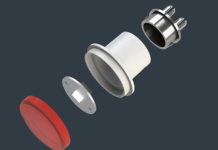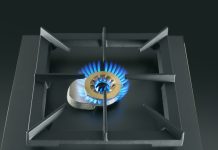The market pays growing attention to the performances of products, both in terms of energy saving and of functional efficacy. The certification carried out by third bodies, such as exactly UL, becomes mandatory to protect consumers and to avoid unfair competition practices.
Roberto Papeschi

Under the boost of ecology and of environmental protection requirements, referring in particular to the need of reducing the emissions of the so called “greenhouse gases”, the governments of the most developed Countries, already starting from the early Nineties, have issued a series of regulations aimed at reducing the energy consumptions of products, among which first of all household appliances, which share in a considerable part of global electrical consumptions. Towards this direction moved the European Union, which has concretely faced the question starting from 1992 when, with the 92/75/CEE Directive, it established the obligation of applying an energy label to the main household appliances.
The Directive found a first application starting from 1998 with refrigerators and freezers, followed by other household appliances in the successive years, then lamps for domestic use and finally conditioners. In the following years, to meet the growing demand for higher efficiency products, new energy classes were introduced and named A+, A++ e A+++. Finally, with the 2010/30/EU Directive, it was extended the possibility of applying the energy label to all the products “connected with energy”.
Besides electrical consumptions, the energy label includes also other interesting data for consumers, like the noise level of the household appliance during the various operation phases as well as various functional characteristics. More in particular, also water consumptions, loading capacity, washing, spin-drying or drying efficiency are indicated for washing products. The label, which must be exposed in view together with products in stores, must be accompanied by a technical card with the identification data and the main technical characteristics of the specific model.
The generalized diffusion of energy labels in the household appliance sector has not only promoted the energy saving but it has transformed this regulatory element into an effective marketing instrument, used by producers for propaganda purposes, to promote the quality of their household appliances among consumers. It is anyway worth reminding that the correctness of the data reported in the label is exclusively entrusted to the responsibility of producers themselves. Unlike the characteristics of electrical safety, which require a conformity certification by a third body, the declaration concerning the product performances reported in the energy label has in fact the value of a simple self-certification of the producer, supplied to consumers without adequate controls.

1 supplier of brand and model
2 energy efficiency class
3 weighted annual energy consumption (kWh/year)
4 weighted annual water consumption (l/year)
5 nominal capacity for the program at full load for cotton fabrics at 60 ° C or 40 ° C
6 efficiency class of the centrifuge
7 noise emissions during the phases of washing and centrifuge to the standard program for cotton fabrics at 60 °C at full load
The need of a regulation
Especially upon the initiative of Consumer Associations as well as of the most reliable producers of household appliances, the attention paid by the market to the real product quality has progressively grown, also owing to the frequent cases of marketing of products whose performances, measured in laboratory, did not correspond to what indicated by the producer. The false statements about the characteristics of products, in fact, do not constitute only a damage for consumers but they represent also a form of unfair competition. We have talked about these aspects with Mr Marcello Manca, Vice President Government & Industry Affairs Europe of UL – Underwriters Laboratories, one of the main leaders in the sector of the certification and safety science on a world scale.
As Marcello Manca tells us, the product performances are one of the main elements on which today the product advertising stakes to motivate the consumers to the purchase. Producers’ self-certifications, however, do not sufficiently grant the market not only in terms of product performances but even concerning safety itself, as highlighted by a recent analysis carried out by IFIA, International Federation of Inspection Agencies, the international federation of independent organizations that operate in the field of control and certification services.
The IFIA study, which has concerned the European market, was carried out in 2012 examining six categories of products with EC mark. In 2013 it was accomplished a similar study that instead concerned the only products certified by a third independent body. Well, while in the second case only 25% of the examined products proved to be not compliant with the European standards and regulations, in the first case that percentage was equal to 82%. Even, in this case, out of 127 examined samples, a good 15 showed serious non-conformities and criticalities regarding safety, while only one case out of 120 samples was detected when the products certified by third parties were examined.
It is also worth noticing that these results are diffused in the entire Community area and even in Countries traditionally careful to respect the rules, like Finland. Well, if such serious flaws are detectable in critical aspects, like those concerning the product safety, even greater are the misconducts that occur for the statements related to the performances of products. Even constituting an essential evaluation element for the consumer’s choice, they are not absolutely verifiable. That lack of transparency, on the other hand, is not limited to the only sector of household appliances, but it is common to the market of other goods, such as cars, whose declared performances and in particular consumptions, are generally better by at least 20% in comparison with what it is actually possible to find.

Europe: a vice of origin
It is worth observing that, in comparison with the other big markets, Europe is the area where the controls of the authorities entrusted with the monitoring of the product compliance with the regulations are less effective. Even Asian Countries, and among them China in particular, have accomplished policies of attentive verification of the foreign product compliance with local regulations, with heavy penalties against violators. This does not happen in Europe, to the extent that the EC mark, which by law must be applied on products marketed in the European market, is simply a conformity declaration or self-certification, released by the producer or importer of the good, without any verification by third authorities.
In particular, concerning the household appliance sector, the practice adopted in Europe is influenced by the period in which the regulations were drawn up, when the almost totality of products was manufactured in the Community area, where the main product brands were established with their productive headquarters. It is for this reason that the European Directives about safety and afterwards the energy saving, rather than protecting the European territory against the invasion of shoddy products coming from rising Countries, aimed at favouring the free circulation of goods inside the Community area.
But now the situation has deeply changed, owing to the productive delocalization that has displaced a relevant part of the European production to other areas, as well as due to the appearance on the market of new operators that produce household appliances in rising markets, among which China has gained a dominant position. The European Parliament itself has decided intervening on this matter with the CPSR (Consumer Product Safety Regulation), an important law provision that today is under pending approval, together with another law (MSR) that provides for more severe regulations about the market surveillance. Such control is made urgent also by the fact that European industries are privileging the production in the Community area of medium-high end household appliances, with greater added value and high performances. For this reason it becomes mandatory the defence of the EC mark and of European consumers’ expectations concerning the performances declared by producers. In that context, the certification of the product conformity to the performances stated by producers, at care of third party undertaking the responsibility of a control action, represents today an obliged course.

The role of UL
Among the third parties that operate in the certification sector, stands out UL – Underwriters Laboratories, an independent company created in the United States in 1894 and specialized in the safety science. Today UL, with 120 years of experience in the evaluation of the product and plant safety and a widespread presence in all geographical areas, makes available for its customers more than 130 structures and laboratories in the main Countries in the world, employing over 10,000 workers.
Among the strong points of UL there are not only the diffusion and the notoriety of its marks, whose certification has been chosen by over 70,000 producers, but there are especially the uncommon knowledge of the various international regulations and the high professional competence of its operators. Knowledge and competence that are fruit of the extensive certification activity of this organization in all the Countries of the world and for the most different product fields, together with the contribution of UL specialists in the definition of international standards, with a participation in more than 185 technical committees
Over the years, UL activities have been extended by enlarging the competences of this body from the product, plant and data safety to the sanitary aspects of the so called “food contact” in food and water sectors, to the aspects concerning the product disposal, referring in particular to the materials and the substances considered in ROHS regulations, up to energy saving problems, connected with the reduction of noxious emissions and more in general with the environmental sustainability.
Over the last few years the attention of the main Countries in the world has been focused just on the energy saving, referring in particular to household appliances. Not only in Europe, whose Commission has operated with determination by issuing a series of Community directives and imposing the diffusion of energy labels but also in the United States with the regulation issued by DOE (Department of Energy), which can be completed by the certification released by a third body, with the “Energy Star” mark.
A regulation equivalent to that provided for by DOE has been adopted by Canada, while limits to the energy consumptions of products have been imposed by the authorities also in the main rising Countries, from Brazil to Russia and China. In more general terms, all over the world it is spreading the acceptance of the IECEE CB Scheme (IECEE Certification Bodies Scheme), which is the international acceptance system of the tests carried out and of the certification results of accredited bodies on a national scale (NCB – National Certification Bodies).
In that context UL, which as International Certification Body is included in the CB scheme, operates as support to industries that export worldwide, with a collaboration embracing the entire life cycle of products, from ecodesign to the disposal at the life end. For this reason, the UL certification requested by a producer is generally started initially considering the requisites of the global market, to include then minor variations concerning the single nations from time to time taken into account, in which the support of local UL structures is anyway active.

The collaboration with AE- Appliances Engineering
The changes occurred in the markets owing to the globalization, with the extended practice of the delocalization of productive sites and the appearance of new players headquartered in rising Countries, have led consumer associations to require effective modalities of control not only of the conformity with the safety regulations of products but also of the compliance of the relative performances with what stated by the producer. The attention of both the most reliable consumers and producers has specifically focused on the need of a verification by third parties of the energy consumptions and the functional performances of products. These characteristics, even if they are today an important element of competition among the various brands, are still object of a simple self-certification of the producer or of the importer of the good.
UL ha intended to satisfy also this market need and for this reason it has searched on the territory for a partner relying on specific competences, able to collaborate with UL in order to grant a certification service of high-end product performances to customers. The choice, after an attentive examination, was made in favour of AE-Appliances Engineering, an advanced professional reality with headquarters and laboratories at Gavirate, in Varese province, which succeeded in gaining an excellent reputation in the subcontracting design of household appliances and in marketing and benchmarking services concerning this same product category.
The terms of the collaboration agreement between UL and AE were diffused in the course of an event organized at the end of November 2013 by the two Companies, in the course of which were also explained the modalities according to which the two enterprises were going to operate. In particular, as explained by Mr Alessio Dellanoce, Engineering Manager of UL, still remaining of UL competence the certification release, AE will provide for performing the tests regarding the household appliance performances in its Gavirate laboratories.

Such tests refer in particular to the energy consumption and the functional efficiency of products, including the temperatures of refrigerators and freezers, the water consumptions and the washing and spin-drying efficiency of washing machines up to the effective cleaning of dishwashers. For the accomplishment of these tests are necessary uncommon skills that UL has identified in AE Appliances Engineering and an adequate technical structure of the laboratories, which have been further developed after the agreement with UL.
[table id=14 /]




